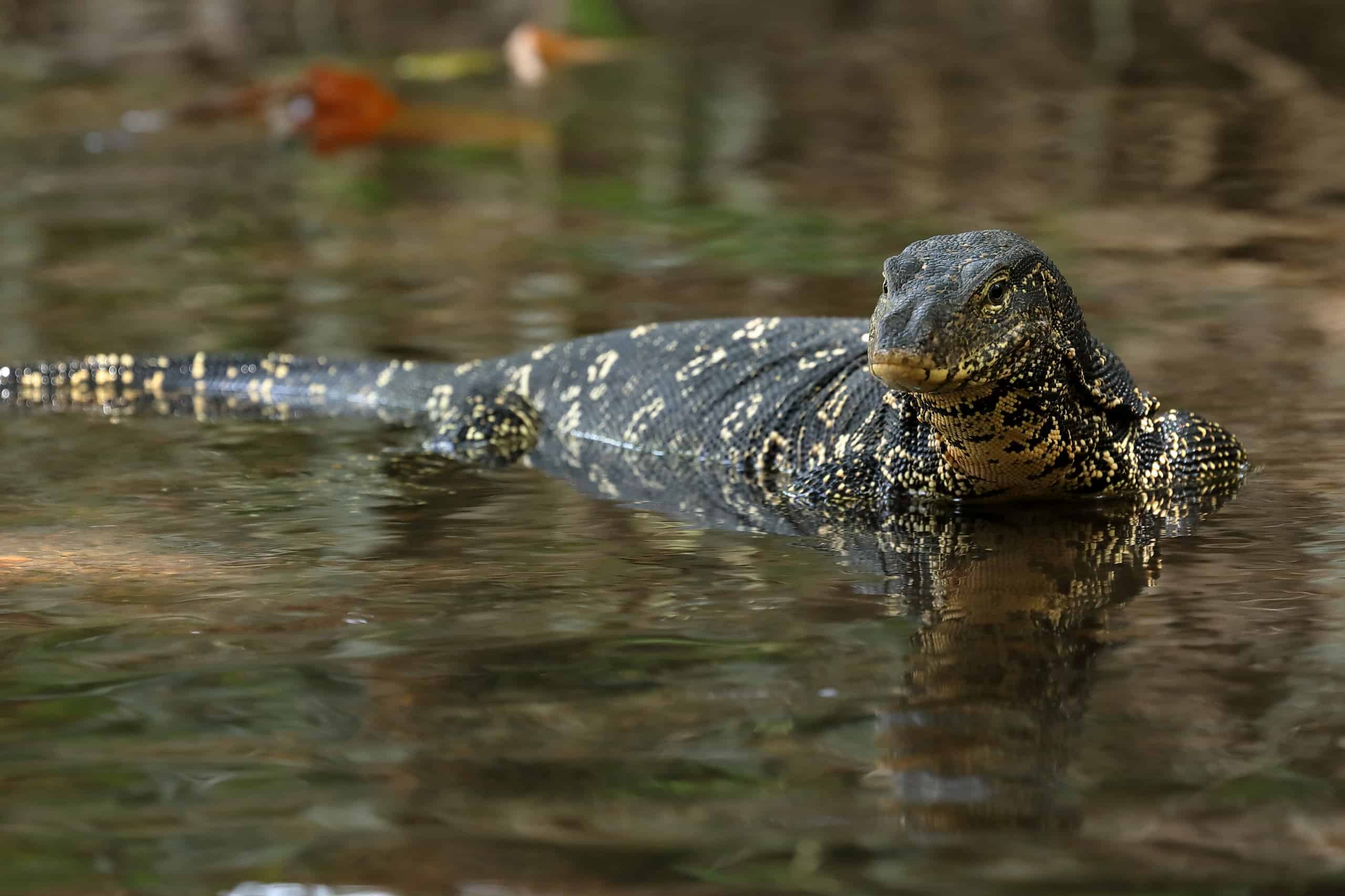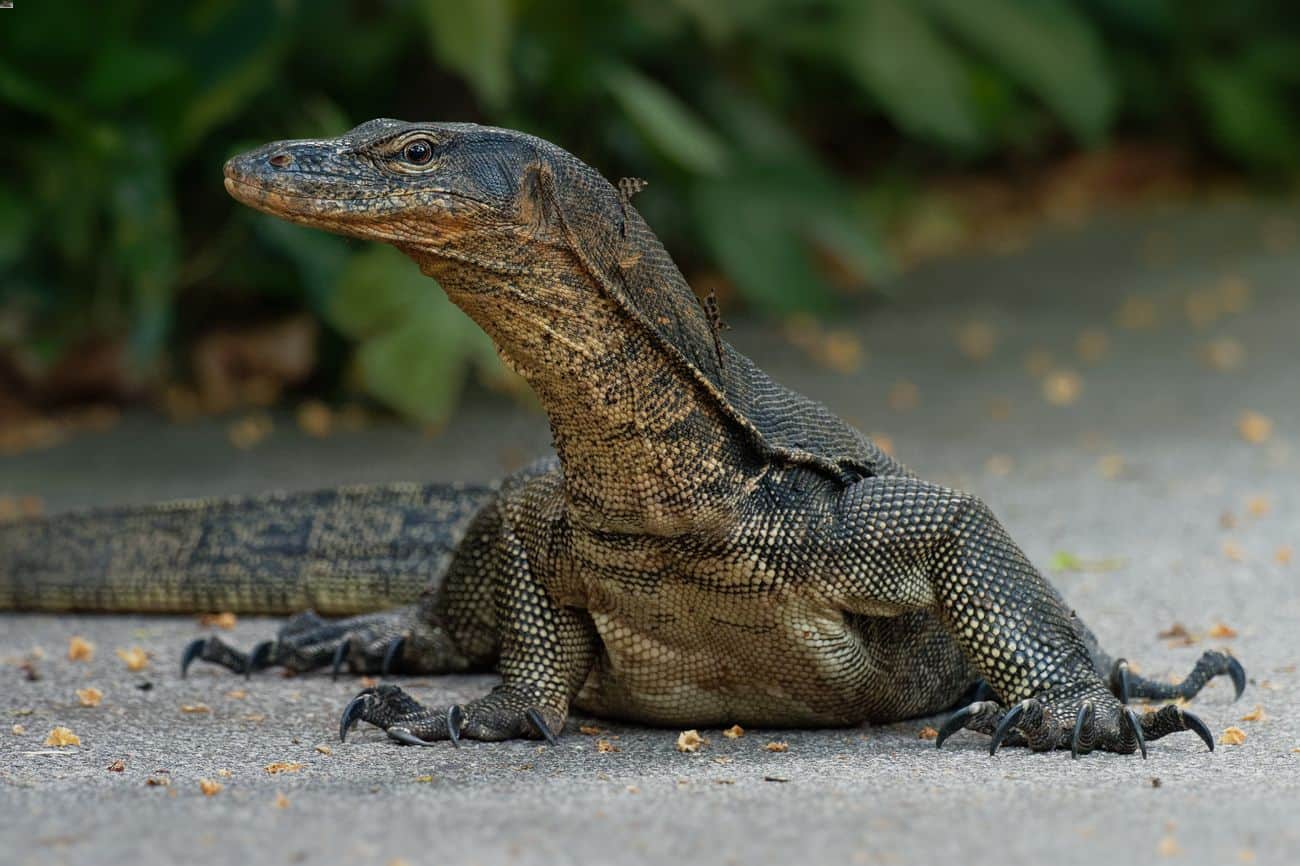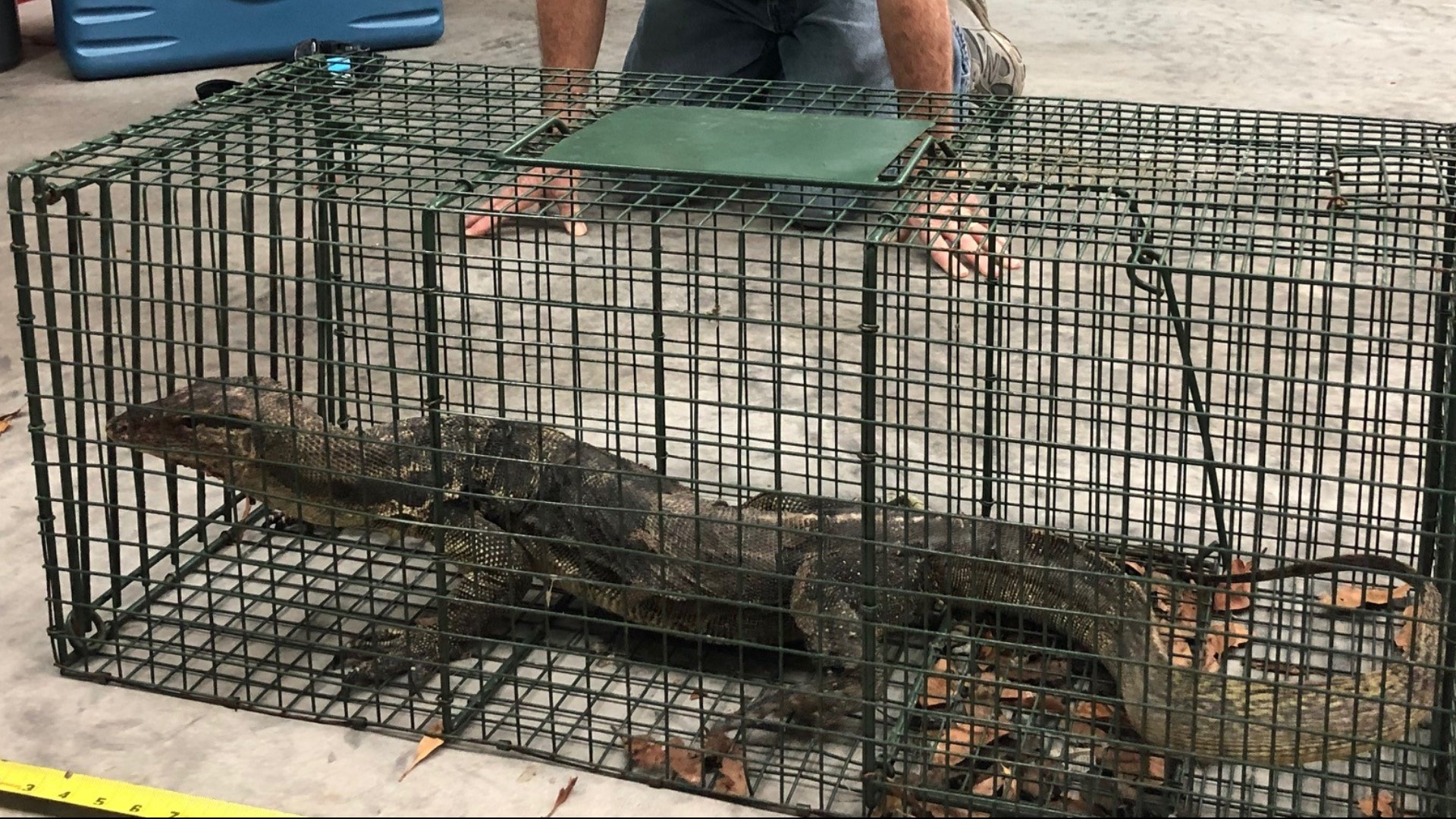Asian Water Monitor Overview: Asian Water Monitor Florida

The Asian water monitor (Varanus salvator) is a large, semi-aquatic lizard native to Southeast Asia. It is a member of the family Varanidae, which also includes the Komodo dragon. Asian water monitors are opportunistic predators that feed on a variety of animals, including fish, reptiles, birds, and mammals. They are also known to scavenge on carrion.
Asian water monitors are typically dark brown or black in color with a yellow or orange belly. They have a long, slender body with a powerful tail. Their head is large and triangular, with a blunt snout. Asian water monitors have sharp teeth and claws that they use to capture and kill prey.
Asian water monitors are found in a variety of habitats, including swamps, marshes, rivers, and lakes. They are also found in urban areas, where they often scavenge for food in garbage dumps and landfills. Asian water monitors are good swimmers and can dive underwater to catch prey. They are also able to climb trees and rocks.
Asian water monitors are not native to Florida, but they have been introduced to the state through the pet trade. They have become established in the wild in several areas of Florida, including the Everglades and the Kissimmee River Valley. Asian water monitors are a threat to native wildlife, as they compete with native predators for food and habitat. They are also known to prey on native animals, such as birds, reptiles, and mammals.
Unique Adaptations
Asian water monitors have a number of unique adaptations that allow them to thrive in Florida’s ecosystem. These adaptations include:
- Their large size and powerful jaws allow them to prey on a variety of animals, including fish, reptiles, birds, and mammals.
- Their long, slender body and powerful tail allow them to swim and climb with ease.
- Their sharp teeth and claws allow them to capture and kill prey.
- Their ability to tolerate a wide range of temperatures allows them to survive in Florida’s hot and humid climate.
Asian Water Monitor Impact on Florida’s Environment

Asian water monitor florida – The introduction of the Asian water monitor has significantly altered the ecological dynamics of Florida’s wetlands and waterways. As apex predators, they exert a cascading effect on the local ecosystem, influencing the behavior, abundance, and diversity of native species.
Competition for Resources
Asian water monitors compete directly with native predators, such as alligators and crocodiles, for food and habitat. They are opportunistic feeders, consuming a wide range of prey, including fish, birds, reptiles, and small mammals. This competition can lead to reduced prey availability for native species, potentially impacting their populations.
Predation on Native Species
Asian water monitors are known to prey on a variety of native species, including turtles, frogs, and small birds. Their predatory behavior can have a significant impact on the abundance and distribution of these species, potentially disrupting the delicate balance of the ecosystem.
Impact on Biodiversity and Ecosystem Stability, Asian water monitor florida
The presence of Asian water monitors has raised concerns about their potential impact on biodiversity and ecosystem stability. By competing with and preying on native species, they can disrupt food webs and alter species interactions. This can lead to a reduction in biodiversity, a decline in ecosystem resilience, and an overall loss of ecological integrity.
Management and Conservation Strategies

Managing the Asian water monitor population in Florida is a complex task that requires a multifaceted approach. Current management practices focus on habitat modification, population control, and public education.
Habitat modification involves altering the environment to make it less suitable for Asian water monitors. This can include removing dense vegetation, filling in burrows, and installing barriers to prevent access to sensitive areas.
Population Control
Population control methods aim to reduce the number of Asian water monitors in the wild. This can be achieved through trapping, hunting, or the use of chemical control agents. Trapping and hunting are labor-intensive and can be difficult to implement on a large scale. Chemical control agents, such as rodenticides, can be effective but also pose risks to non-target species.
Public Education
Public education is essential for raising awareness about the impacts of Asian water monitors and promoting responsible behavior. This includes educating people about the dangers of feeding wildlife, the importance of properly disposing of trash, and the need to report sightings of Asian water monitors to the authorities.
The effectiveness of these management practices varies depending on the specific circumstances. Habitat modification can be effective in reducing the availability of suitable habitat, but it can also be costly and time-consuming to implement. Population control methods can be effective in reducing the number of Asian water monitors, but they can also be expensive and labor-intensive. Public education is essential for changing human behavior and reducing the impacts of Asian water monitors, but it can be difficult to measure its effectiveness.
Future conservation strategies should focus on developing more effective and cost-efficient management practices. This may include the development of new trapping and hunting techniques, the use of more selective chemical control agents, and the development of innovative public education campaigns.
In the vibrant tapestry of Florida’s ecosystem, the Asian water monitor lizard reigns supreme. Its imposing presence and predatory instincts have captivated the attention of nature enthusiasts. However, amidst the headlines about this enigmatic creature, another story has unfolded—the breakup of the iconic country music duo, Florida Georgia Line.
While the reasons behind their split remain shrouded in speculation, the news has reverberated through the music industry, leaving fans reeling. As the Asian water monitor continues to thrive in Florida’s waterways, the legacy of Florida Georgia Line will forever be etched into the annals of country music.
The Asian water monitor is a large lizard native to Southeast Asia. It is a semi-aquatic species that can be found in a variety of habitats, including swamps, marshes, and rivers. The Asian water monitor is a carnivorous predator that feeds on a variety of animals, including fish, frogs, and small mammals.
In recent years, the Asian water monitor has become an invasive species in Florida. The lizard has been introduced to the state through the pet trade, and it has now established itself in several areas. The Asian water monitor is a threat to native wildlife, and it is also a potential danger to humans.
For more on celebrities, see our article on Yellowstone Cast Married. The Asian water monitor is a powerful predator that can inflict serious injuries with its sharp claws and teeth.
The Asian water monitor, a large lizard native to Southeast Asia, has become a growing concern in Florida. These reptiles can reach up to 10 feet in length and pose a threat to native wildlife and humans alike. Their presence has prompted state of emergency declarations in some areas, as officials struggle to contain their spread.
Despite efforts to eradicate the Asian water monitor, the invasive species continues to thrive in Florida’s waterways.
The recent sighting of an Asian water monitor in Florida has raised concerns among wildlife officials, but the buzz surrounding this invasive species has been temporarily overshadowed by the news of Lopez canceling his tour. While the entertainment world grapples with this unexpected announcement, the Asian water monitor remains a threat to Florida’s ecosystem, reminding us of the delicate balance we must maintain with our natural surroundings.
The Asian water monitor, a large lizard native to Southeast Asia, has been spotted in Florida, raising concerns about its potential impact on the local ecosystem. Meanwhile, the Washington Commanders, a professional football team, have announced a name change, a move that has sparked controversy among fans.
The new name, commanders name change , has been met with mixed reactions, with some praising the team for taking a stand against racism and others criticizing the choice as unoriginal and uninspired. Despite the ongoing debate over the Commanders’ name, the presence of the Asian water monitor in Florida serves as a reminder of the interconnectedness of the natural world and the importance of protecting our environment.